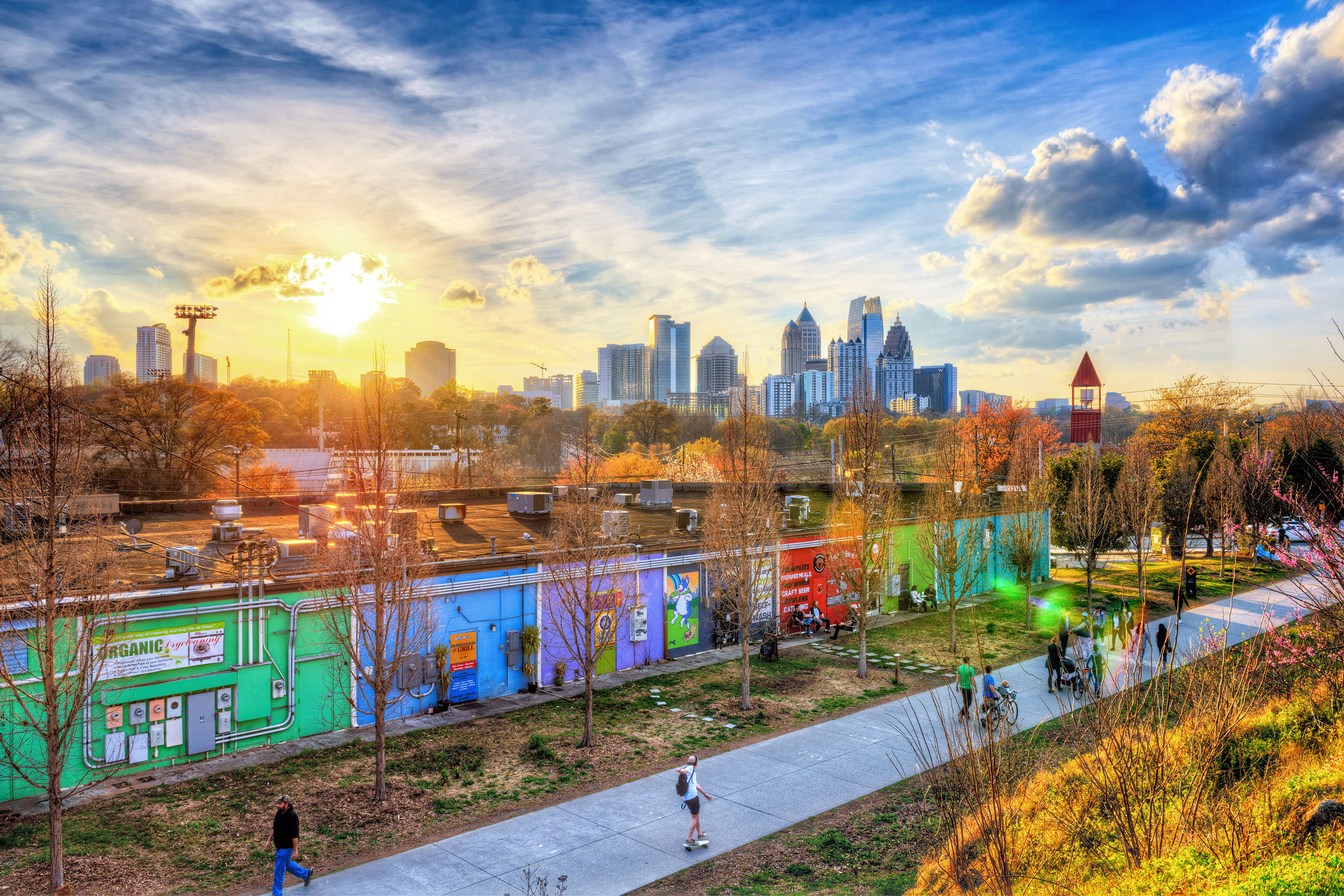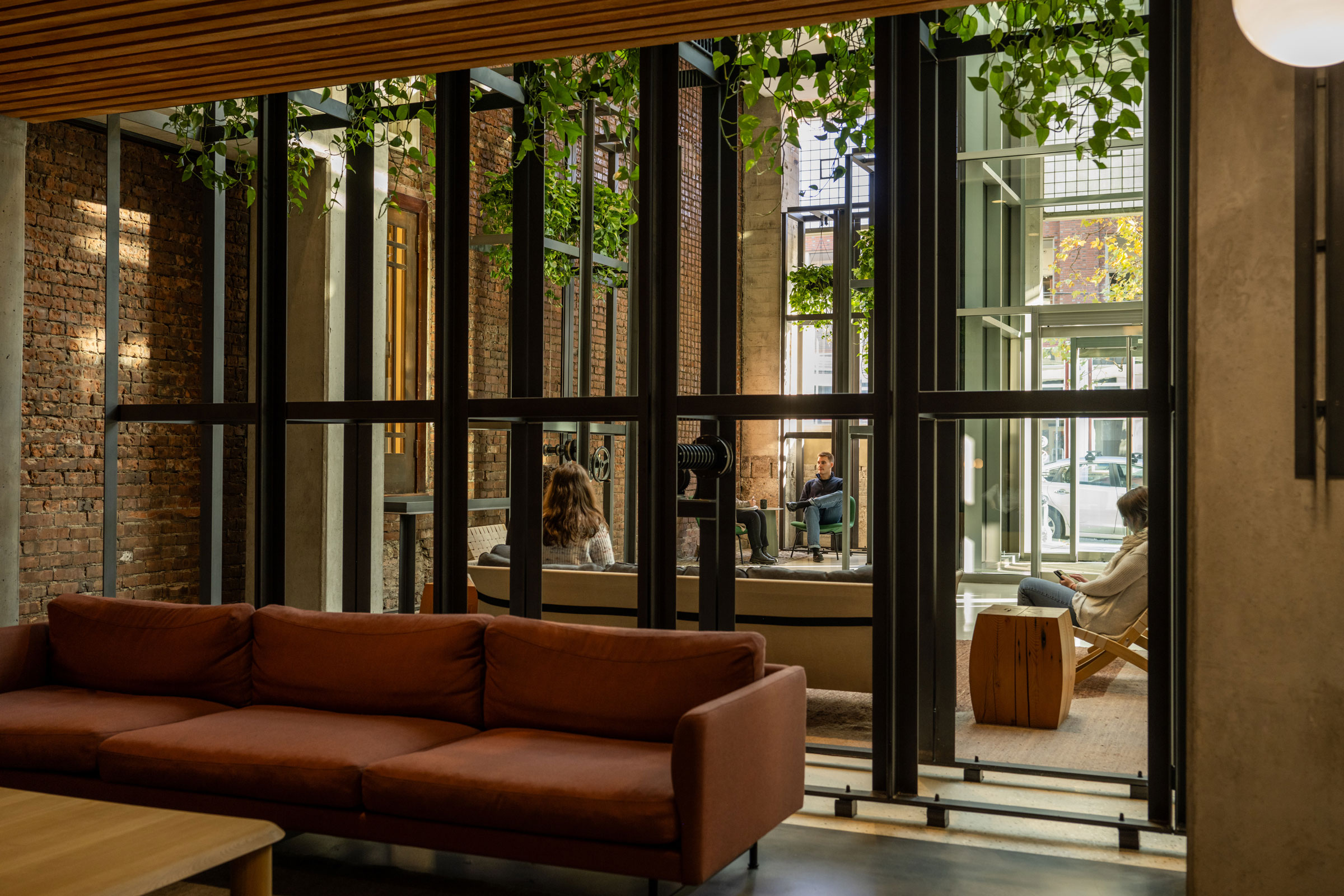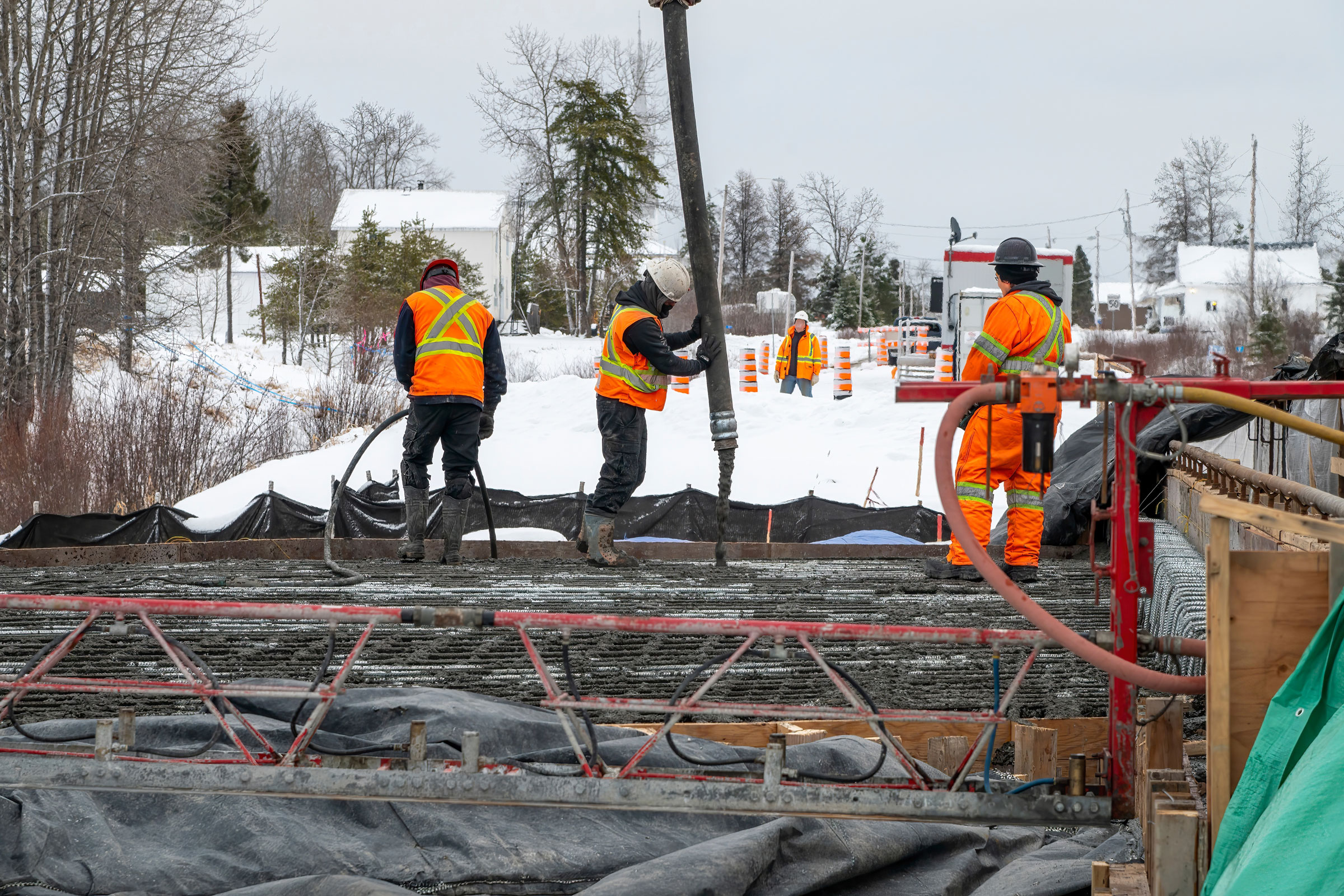Story at a glance:
- Locals and tourists alike continue to flock to the Beltline for its diverse offerings, walkability, and green space.
- Experts point to how infrastructure is more than just concrete and buildings; it creates opportunities for people to live their lives in new ways.
More than just a path, Atlanta Beltline is a 22-mile loop connecting 45 intown neighborhoods. It’s a vibrant, ever-evolving public space where recreation meets the city’s soul,” says Charlene Lopez, executive vice president and chief sales officer for the Atlanta Convention & Visitors Bureau. “As one of the nation’s most ambitious urban redevelopment projects, it’s a point of pride for locals and a must-see for visitors.”
On a warm day in spring, the Beltline was as busy as ever—couples on dates, people biking and rollerblading, young people headed to the skate park.
“The Beltline buzzes with life, offering a unique opportunity to explore Atlanta’s thriving culinary scene, craft breweries, art galleries, and local businesses,” Lopez says. “Plus, with the Westside Trail’s highly anticipated full opening this spring, it’s becoming an increasingly vital transportation corridor.”
Countless murals, places to sit surrounded by trees, and easy access into inviting, walkable neighborhoods continue to make the Beltline a destination.
Beltline Beginnings

Ponce City Market is just steps from the Beltline and today is home to more than 80 businesses as part of an impressive adaptive reuse project. Photo by Melissa McAlpine, courtesy of ACVB
Ryan Gravel studied architecture and city planning in undergrad at Georgia Tech and fell in love with cities during his senior year while in Paris. “Specifically the role of the city itself—the physical, built city—and shaping opportunities for my life, that this physical city creates opportunities or limitations to the way people live. The design of the city matters to the way we want to live,” he says.
Gravel returned to grad school, where his master’s thesis in 1999 was the original vision for the Atlanta Beltline. “I wanted to imagine a different kind of future for the city that would make me want to live here and invest my career and family and all of that here. I never imagined we would actually do it. I just wanted to propose an idea,” he says. “So the Beltline was my thesis project. It was about transforming Intown Atlanta, 45 different neighborhoods, incentivizing their revitalization and the redevelopment—specifically the redevelopment of all the industrial land that follows them by repurposing these old freight railroads for a different kind of purpose.”
At the time the area was suffering from crime and had largely been abandoned when industry moved out to the suburbs, Gravel says. Today the Beltline attracts 2 million people each year—and not just tourists. Many people use it to commute to work, says Michael Phillips, president of Jamestown, the global real estate management and investment firm best known in Atlanta for developing Ponce City Market—itself a major anchor with public green space and direct access to the Beltline.
“The Beltline was a great promise, an elastic promise for a long time until it came into fruition,” Phillips says. “It’s a really interesting alternative, transit-based development corridor despite the fact that the rail isn’t there today. It’s really proven to be this incredible connective tissue and an alternative form of transit in a really healthy way.”
Jamestown was working on Ponce City Market, which officially opened in 2014, around the same time as the Beltline was taking off. “It really created this Old Fourth Ward critical mass or epicenter of how people started to engage with all these things around the first section of the Beltline,” Phillips says. “Lots of amazing neighbors and collaborators have come together as part of that.”
Today Ponce City Market itself is home to more than 80 businesses—from high-end restaurants and retail to more casual dining, shopping, and even Skyline Park, a rooftop Coney Island–style boardwalk with games, rides, and more. An impressive 6,000 businesses are within a half mile of the Atlanta Beltline, according to beltline.org. Jamestown also recently developed Scout Living, a flexible hospitality offering steps from the market.
How We Live Matters
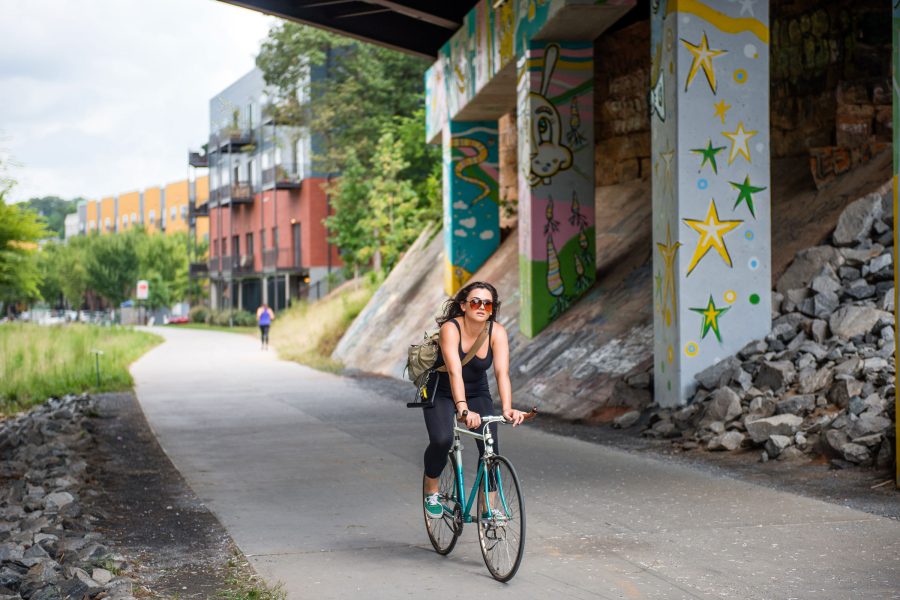
The Beltline is used by locals, commuters, tourists, and businesspeople on any given day. Photo by James Duckworth, courtesy of ACVB & Atlantaphotos.com
While Gravel has no official designation with the Beltline these days, his expertise continues to be valued by communities far and wide. Through his urban design consultancy Sixpitch he works with clients on dramatic city transformations using a range of approaches and partnerships he says are designed to support a more equitable, resilient, and beautiful world. He currently advises on a few Beltline-esque projects in addition to other work.
“We’ve been building cities around cars now for over half a century, and it’s not really working that well,” he says. “If we want a different way of life we need to be building something else.” The Beltline, he says, is a great and innovative example of how that can work. “It made Atlanta a different kind of place and changed people’s expectations about their own lives.”
We’ve been building cities around cars now for over half a century, and it’s not really working that well.
The challenge, he says, is the follow-through. “For these big, long-term projects you have to maintain that commitment to make sure the whole thing gets built, that it includes everybody, that we follow through on transit and housing and all the other things that make it work long-term. That’s been the biggest challenge for the Beltline.”
Gravel says the city is changing in front of our eyes, and it continues to be important to pay attention to how that change affects all people. “There are lots of lessons to learn in that. The Beltline is as much about lessons of what not to do as what to do, and that’s how the world is built.”
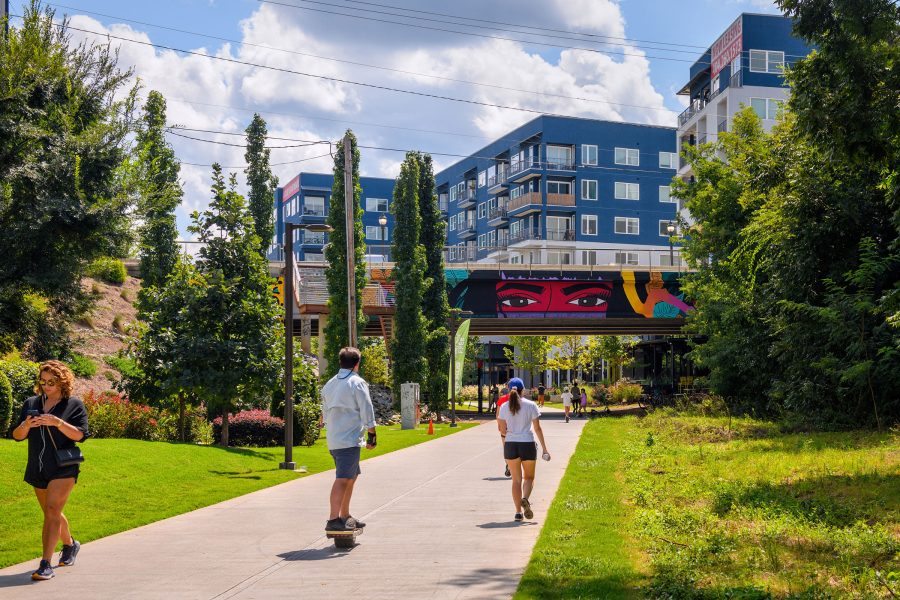
Atlanta’s Beltline is an inspiring greenway that continues to evolve. Photo by Gene Phillips, courtesy of ACVB & Atlantaphotos.com
For Gravel, the Beltline continues to be important because it’s a part of where he and his family live. “Love is this underrated line of thinking in terms of urban development and city planning. We act like we are making these objective decisions about things, but we’re not. We’re making decisions for our own lives and the way we want to live them and who we want to live them with. It’s really personal,” he says.
“It matters, and that’s what makes life interesting. Frankly, that’s what makes cities interesting. That’s why I was always drawn to infrastructure,” Gravel says. “Like the Beltline right now. It’s just a multi-mile slab of concrete, but what it does for people, the way that it allows them to live the kinds of lives they want to live, and what they do with it is really interesting. That’s what makes the Beltline interesting; it’s not the slab of concrete. It’s the way the people use it and the kinds of lives and opportunities it creates for them.”

